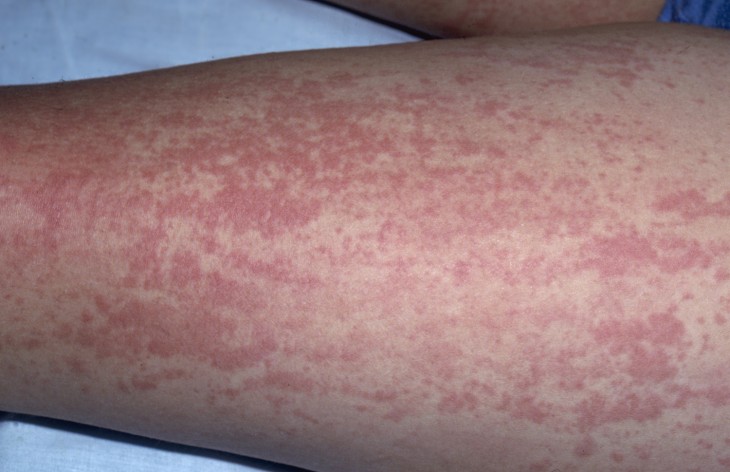Photo courtesy of VisualDx.
Rheumatology Network Editorial Staff
July 3, 2019
Adult-onset Still’s disease (AOSD)
Adult-onset Still disease (AOSD) is a rare multisystem inflammatory disorder seen in young adults, typically before the age of 30, and occurring more commonly in women than men. The etiology of AOSD is currently unknown but hypothesized to be autoinflammatory with a component of genetic susceptibility. The disease shares only some of the signs and symptoms of pediatric Still disease (systemic-onset juvenile rheumatoid arthritis) and has many unique clinical features.
AOSD is characterized by spiking fevers that typically peak in the late afternoon or early evening, a pink or salmon-colored evanescent rash, polyarthralgia, hepatosplenomegaly, lymphadenopathy, and sore throat. Fever, rash, and arthralgias occur in most patients. Arthralgias and arthritis typically affect the knees, ankles, and wrists.
There are 3 different patterns in the clinical evolution of AOSD. The monocyclic pattern is self-limited and characterized by one flare of variable duration followed by complete remission. The polycyclic pattern is marked by 2 or more episodes with intervening symptom-free periods. The chronic articular pattern is characterized by severe joint manifestations that lead to joint-space narrowing and destruction. AOSD can also have serious systemic complications including serositis, chronic arthropathy, and macrophage activation syndrome. Late carpal ankylosis occurs in approximately 25% of patients and represents a distinct clinical feature differentiating AOSD from rheumatoid arthritis.
Source: rheumatologynetwork.com/ima...
LUpus Patients Understanding & Support (LUPUS):
